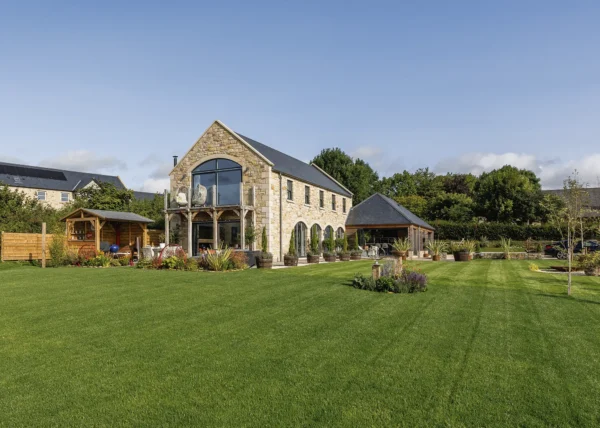What Do The Coalition’s Planning Changes Mean for Self-Builders?
The coalition government’s manifesto promised wide-ranging reform of the planning system. A few high-profile changes have already been made with almost indecent haste, and more are in the pipeline. So, what are the implications for self-builders?
Garden grabbing
The most publicised policy change concerned ‘garden grabbing’. However, government rhetoric and media headlines of sweeping reform are far removed from the reality. All that has changed here is that the definition of ‘previously used land’ – also known as ‘brownfield’ – has been amended to exclude domestic gardens.
Planning Policy Statement PPS3: Housing still contains this advice: “Options for accommodating new housing growth may include additional housing in established residential areas”. The statement also encourages the location of new housing in areas close to shops, jobs, schools and general amenities, which in practice means within existing settlements where most available land will be gardens. Yes, the statement seeks 60 per cent of new housing on previously developed land, but that still leaves 40 per cent to go elsewhere.
Most councils’ policies prevent new housing outside development boundaries around towns and villages. Inside these lines, infilling and small-scale housing development is generally allowed, regardless of the brownfield/greenfield status of the site.
No minimum density
The minimum density limit for new housing development of 30 dwellings per hectare (12 per acre) has been removed from PPS3. This could actually help self-builders, as there have been instances of self individuals seeking to build one house being told they should build three or four, to comply with the density minimum. In the absence of a density minimum, PPS3 still encourages the efficient use of land so in practice not a great deal has changed.
Abolition of regional housing targets
The abolition of regional spatial strategies might not seem relevant to self-builders. But without these documents – which set out the housing number targets that each council had to meet – councils now have to sort out their own housing land supply targets. Some councils will inevitably take the opportunity to reduce new house building, and most will be at something of a loss while they sort themselves out.
However, there will now be a pressing responsibility on councils to ensure an adequate supply of housing land. Although single new houses have little real effect on housing land supply, an over-supply can lead to an embargo on new planning permissions and an under-supply does provide an extra argument in favour of granting permission. Watch this space to see how this settles down in practice and whether it turns out to be a bane or a blessing.
Planning appeals
As part of the general thrust towards greater control over planning at the local level, the Conservative party had indicated, pre-election, that it favoured introducing a right of appeal by ‘third parties’ against the grant of planning permission. Ireland and Scotland both have it, so it’s not without precedent.
Some have described this as a nimby’s charter. Others fear it will add yet more cost, delay and uncertainty into the planning system such that it will deter people from making applications.
People thinking of self-building will no doubt view it as an extra hurdle to be overcome, while those who’ve recently completed their dream home may well welcome it as a way of protecting their investment.
‘Home on the farm’ schemes
The coalition’s manifesto promises to promote schemes to encourage farmers to convert existing buildings into affordable homes. Given that a significant thrust of government planning policy is towards ensuring new homes are built in ‘sustainable’ locations, close to shops, schools, jobs etc, it’s hard to see how shoving hard-up families out on to farms fits this requirement.
The idea of converting old barns, for example, into affordable housing also appears problematic due to the high and generally unpredictable cost of such conversions.
Longer term planning changes
The manifesto promises that the government will ‘radically reform the planning system to give neighbourhoods far more ability to determine the shape of the places in which their inhabitants live’. The problem is, planning is a favourite target of governments looking to leap in with a bit of radical reform, and no sooner does one system just start to bed in, than another one is imposed instead.
That would be fine if the new systems had historically simplified the system and made it easier to understand and use. Unfortunately, past changes have had the precise opposite effect. Only time will tell whether the coalition will buck the trend and get it right.

































































































 Login/register to save Article for later
Login/register to save Article for later












Comments are closed.